Key Takeaways:
- Discover the best telescope kits for beginners that won't require a PhD in Astrophysics to use.
- Learn about the features that make a telescope user-friendly for night sky newbies.
- Find out which budget-friendly telescopes can show you more than just a blurry dot in the sky.
Stargazing is a hobby that's literally out of this world, and choosing your first telescope is like picking your first car, but with less road rage and more celestial objects. So, you want to gaze at the night sky, spot some deep sky objects, and maybe even impress your friends with your newfound ability to distinguish between a star cluster and a blurry smudge on your lens. Well, you're in luck because we've scoured the cosmos (or at least the internet) to bring you the best telescope kits for beginners.
The "I Swear It's Not a Paper Tube" Telescope: Reflector Telescopes
Reflector telescopes, such as the classic Newtonian telescope, are a great starting point for beginners. They're like the punk rockers of the telescope world – rebellious and not too fancy. With a simple mirror setup, they bounce light around like it's in a mosh pit, eventually bringing distant galaxies into your eyeballs. They usually come with a red dot finder, which is essentially a "you are here" map for the night sky.
The "Look Ma, No Hands!" Telescope: Computerized Telescopes
If you're the type who can't find the milk in the fridge, then a computerized telescope might be your best friend. These smart telescopes, like the Celestron NexStar SE, come with a database of celestial objects and can automatically point to them. It's like having a GPS for the universe, which is handy when you're trying to locate something more elusive than your missing left sock.
The "Budget-Friendly Universe" Telescope: Best Budget Telescopes
Who says you need to sell a kidney to afford a high-quality telescope? There are plenty of budget telescopes that offer a window to the cosmos without breaking the bank. These beginner telescopes might not have all the bells and whistles, but they'll show you bright celestial objects and make you feel like Galileo on a budget.

The "It's Not Just a Phase, Mom" Telescope: Catadioptric Telescopes
Catadioptric telescopes are the emo kids of the telescope family. They're a bit more complex, combining lenses and mirrors to fold light like origami, resulting in a compact and portable telescope. The Celestron Inspire AZ Refractor Telescope is a good example, perfect for those who want to observe both celestial and terrestrial objects without lugging around a giant tube.
The "Bigger Is Better" Telescope: Dobsonian Telescopes
Dobsonian telescopes are the bodybuilders of telescopes – they're all about that aperture. With a simple yet effective design, they offer a big bang for your buck. These telescopes are great for observing deep sky objects, and their large mirrors collect enough light to give you a front-row seat to the universe's greatest hits.
The "Twinkle Twinkle Little Star, How I Wonder What You Are" Telescope: Refractor Telescopes
Refractor telescopes are the classic telescope design, like what you'd see in a pirate movie. They use lenses to bend light and bring distant objects into focus. They're generally low maintenance, and with a long focal length, they're great for observing the solar system and bright celestial objects. Plus, they're less likely to attract space parrots than a pirate's spyglass.

The "I Can See Clearly Now" Telescope: Erect Image Star Diagonal
An erect image star diagonal is a fancy way of saying "this thing makes the image right-side up." It's a nifty accessory for refractor and catadioptric telescopes that ensures you're not standing on your head trying to get a proper view of the Orion Nebula.
The "I Need Space" Telescope: Equatorial Mounts
Equatorial mounts are like the personal trainers for telescopes – they keep everything aligned and in tip-top shape for tracking celestial objects. They're a bit more complex than your standard mount, but once you get the hang of it, you'll be tracking stars like a pro. Just remember, it's all about the right ascension and declination, not the hokey pokey.
The "There's an App for That" Telescope: App Controlled Telescopes
Welcome to the 21st century, where even telescopes have apps. App controlled telescopes, like the Celestron Astro Fi, connect to your smartphone and allow you to control your telescope with a few swipes. It's perfect for the tech-savvy beginner who wants to add "astronomer" to their list of skills right after "can order pizza with a phone."

The "I Didn't Know I Needed That" Telescope Accessory: Finder Scope
A finder scope is like the wingman for your telescope. It's a small, secondary scope that helps you locate specific celestial objects before you zoom in with the main telescope. It's especially handy when you're trying to find faint galaxies that are playing hard to get.
The "Now You See Me" Telescope: Motorized Mount
A motorized mount is for those who prefer to observe the night sky with the least amount of effort possible. It moves your telescope automatically, tracking celestial objects as they move across the sky. It's like cruise control for stargazing, and it's perfect for lazy astronomers who'd rather not move their telescope every five minutes.
The "It's Not Just a Telescope, It's a Lifestyle" Telescope: Celestron Starsense Explorer
The Celestron Starsense Explorer is like the smartphone of telescopes – it's smart, sleek, and makes life easier. With its built-in star diagonal and smartphone app, it helps you find and observe celestial objects in just a few minutes. It's the best smart telescope for beginners who want to jump straight into observing without fumbling around in the dark.

The "Old School Cool" Telescope: Classic Telescopes
Classic telescopes are the vinyl records of the stargazing world. They may not have all the modern features, but they offer a traditional and hands-on approach to observing the night sky. These telescopes require a bit more skill to use, but they reward you with a sense of accomplishment and a connection to the astronomers of yore.
The "I'm Not Like Other Telescopes" Telescope: Unique Optical Designs
Every telescope has its own optical design, which affects image quality and what you can see. Some telescopes are better for planetary viewing, while others excel at showing you faint objects like distant galaxies. It's all about finding the right telescope that matches your stargazing style and interests.
The "You've Got to Start Somewhere" Telescope: Best Beginner Telescopes
The best beginner telescopes are the ones that offer a balance between ease of use, quality, and price. They come with everything you need to get started, including two eyepieces and a finder scope. They're the perfect entry point for anyone looking to dip their toes into the cosmic ocean without diving headfirst into the deep end.

The "Night Vision" Telescope: Observing Deep Sky Objects
Deep sky observing is like the ultimate Easter egg hunt, but instead of chocolate, you're searching for star clusters, nebulae, and galaxies. Telescopes with a long focal length and high-quality optics, like the Orion Nebula, are ideal for this type of stargazing. They bring faint galaxies into sharp focus, allowing you to explore the night sky in incredible detail.
The "Seeing Is Believing" Telescope: High Image Quality
Image quality is crucial when it comes to telescopes. You want sharp images that make celestial objects pop, not blurry blobs that leave you guessing. Telescopes with high-quality optics and a good focal ratio will give you clear and detailed views of the night sky, making your stargazing experience truly out of this world.
The "One Small Step for Man" Telescope: Solar System Targets
If you're more interested in observing planets than faint galaxies, you'll want a telescope with a high-quality objective lens and a long focal length. These telescopes are great for solar system targets, allowing you to see details like Jupiter's bands or Saturn's rings. It's like taking a tour of the solar system from the comfort of your backyard.
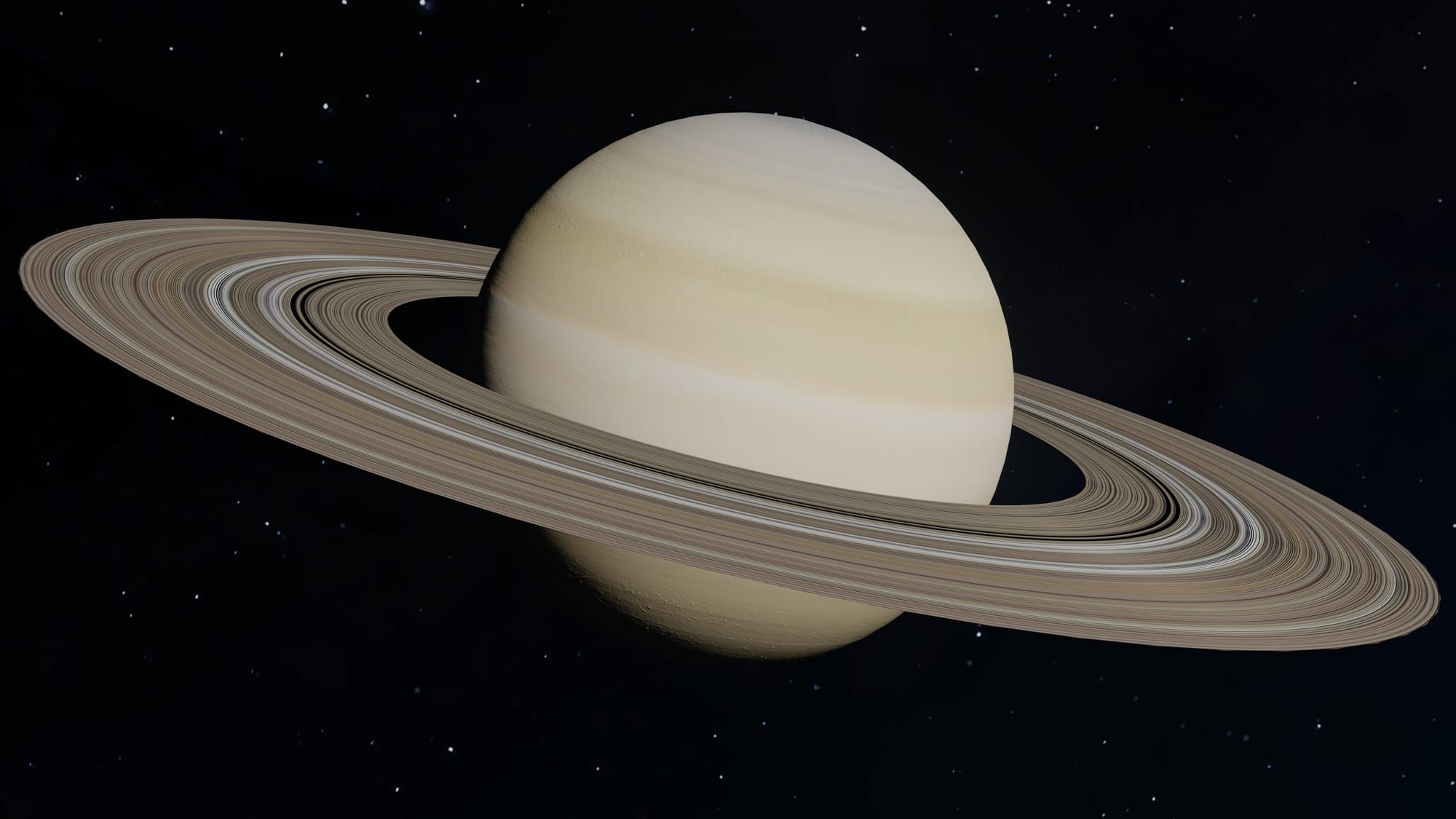
The "It's Not You, It's Me" Telescope: Choosing the Right Telescope
Choosing the right telescope is a personal journey. It's about finding the one that fits your needs, interests, and budget. Whether you're drawn to the best smart telescope or a classic telescope with a rich history, the most important thing is that you enjoy the experience of exploring the cosmos.
The "I Can't Believe It's Not Butter" Telescope: Surprisingly Good Inexpensive Telescopes
Inexpensive telescopes can sometimes surprise you with their quality and features. You don't always have to spend a fortune to get a good view of the night sky. There are plenty of affordable options that offer a great introduction to astronomy, proving that sometimes, the best things in life (or at least in stargazing) are free (or at least cheap).
The "Space Oddity" Telescope: Unique Features
Some telescopes come with unique features that set them apart from the crowd. From built-in star diagonals to motorized mounts, these features can enhance your stargazing experience and make observing the night sky a breeze. It's like having a Swiss Army knife for astronomy – you never know when those extra tools will come in handy.
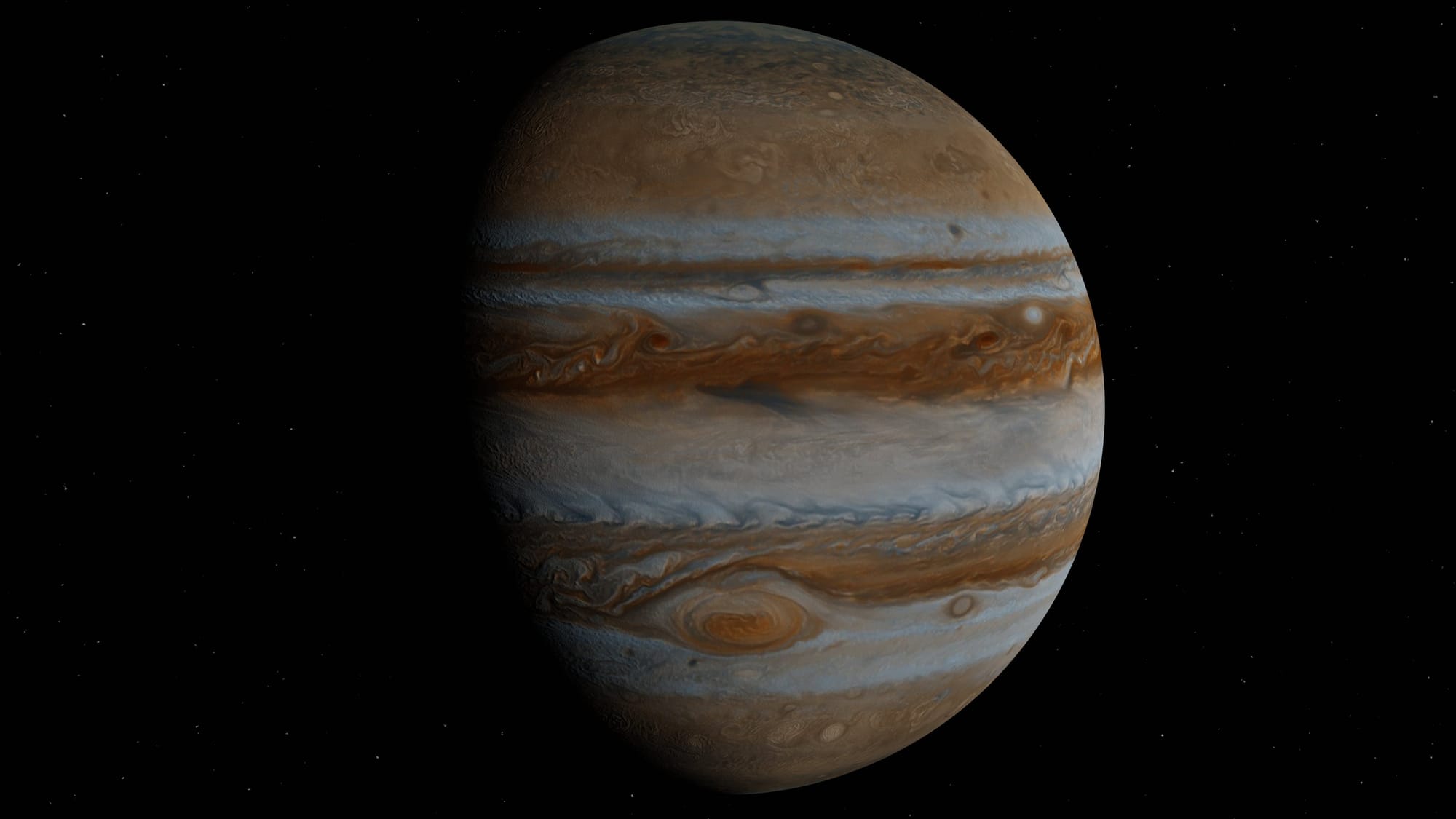
The "Shooting for the Stars" Telescope: Aspiring Astronomers
For those who dream of becoming experienced astronomers, starting with a basic telescope is the way to go. It allows you to learn the ropes without getting overwhelmed by complex features. As you grow in your hobby, you can upgrade to more advanced telescopes that cater to your developing skills and interests.
The "Peekaboo, I See You" Telescope: Spotting Faint Galaxies
So, you've decided to take a leap into the cosmic unknown with one of the best telescope kits for beginners, and you're ready to spot some faint galaxies that don't even have the decency to twinkle. Well, aren't you ambitious? With a telescope featuring a long focal length and a generous aperture, you can play hide and seek with celestial objects that are billions of light-years away. Just imagine, photons that have been traveling across the universe for longer than humans have been around, ending their journey on your retina. Poetic, isn't it?
But let's get real, you're not going to see the flag the Apollo astronauts left on the moon with your beginner telescope. However, with the right specs, like a Newtonian telescope with a sizable mirror, you can catch a glimpse of the Orion Nebula, where stars are being born as we speak. Or, if you're lucky and under one of those coveted dark sky sites, you might just make out the Andromeda Galaxy, waving back at you from 2.5 million light-years away. Just a few minutes of setup, and you're the neighborhood cosmic voyeur.
The "My First Spaceship" Telescope: Best Telescope Kits for Beginners
Ah, the best telescope kits for beginners, where the dreams of owning a spaceship are modestly downsized to a tube with lenses. But fear not, young Padawan, for these beginner telescopes are your first step into a much larger world. With specifications that won't require a PhD in Astrophysics to understand, these kits often come with a user-friendly manual that's almost as easy to read as your favorite comic book. They typically include a telescope with a decent aperture and a focal length that promises to bring distant galaxies just a little closer to your backyard.
Now, let's talk about the accessories because, let's be honest, they're half the fun. These kits often come with not one, but two eyepieces, a red dot finder to help you navigate the night sky, and sometimes even a smartphone app to make you feel like you're piloting the Millennium Falcon. The best part? You won't have to sell your car to afford one. The best budget telescope in these kits is usually a reflector or a refractor telescope, which are great for observing bright celestial objects and won't have you squinting through a glorified pirate spyglass.

The "Celestial Noob" Telescope: First Telescope Features
So, you've decided to take the plunge into the cosmos with your very first telescope. Congratulations, you're about to join the ranks of the celestial noobs! Your first telescope should come with a few key features that won't leave you feeling like you're trying to spot an alien on a distant planet with binoculars. Look for a sturdy equatorial mount that will make tracking the stars as smooth as butter. And if you're worried about setting it up, some of these beginner telescopes come with a computerized system that's smarter than your average bear.
But what about the optics, you ask? Well, you'll want a telescope with a high-quality optical design that can provide sharp images of specific celestial objects. Whether it's the craters on the Moon or the rings of Saturn, you'll want to see them in all their glory without feeling like you're looking through a kaleidoscope. And if you're lucky, your telescope might just come with an erect image star diagonal, which means you'll see things the right way up rather than doing a handstand to make sense of what you're looking at.
The "Not Your Grandpa's Binoculars" Telescope: The Celestron Astro Fi
Remember when a telescope was just a tube with a couple of lenses? Well, the Celestron Astro Fi is here to laugh in the face of tradition. This smart telescope, which is perfect for the tech-savvy beginner, connects to your smartphone app, making it easier than ever to navigate the night sky. With a built-in star diagonal for comfortable viewing and a red dot finder to point you in the right direction, it's like having a cosmic GPS. Who needs constellations when you've got a computerized assistant?
But don't think that this telescope is all brains and no beauty. The Astro Fi's optical design ensures sharp images of celestial objects, making it a high-quality telescope that punches above its weight class. And with its portable design, you can take it to the darkest dark sky site or just set it up in your backyard for a spontaneous stargazing session. It's the best of both worlds: the latest technology with the timeless wonder of the cosmos. Just don't tell Grandpa; he might trade in his binoculars.
The "It's a Bird, It's a Plane, It's... Oh, It's Just Venus" Telescope: Planetary Viewing
Planetary viewing is a thrilling part of astronomy, and the right telescope can make all the difference. Telescopes with a high aperture and long focal length are ideal for observing planets and their moons. They provide clear and detailed views, allowing you to see features like Mars' polar ice caps or Venus' phases.

The "Star-Crossed Lovers" Telescope: Observing Star Clusters
Star clusters are like the cosmic equivalent of a diamond necklace – they're dazzling and mesmerizing. Telescopes with a wide field of view and good optical design are perfect for observing these celestial jewels. They allow you to take in the full beauty of star clusters, making you feel like you're wearing the universe around your neck.
The "Beam Me Up, Scotty" Telescope: Portable Telescopes
For the stargazer on the go, a portable telescope is a must. These telescopes are designed to be lightweight and easy to transport, so you can take them to dark sky sites or on your next camping trip. They're like the travel mugs of the telescope world – convenient and ready for adventure.
The "Dark Side of the Moon" Telescope: Dark Sky Sites
Dark sky sites are the holy grail for stargazers. They offer the best conditions for observing deep sky objects and faint galaxies. Telescopes that are easy to transport and set up are ideal for these locations, allowing you to make the most of the pristine night sky. It's like finding a secret spot where the stars shine just for you.
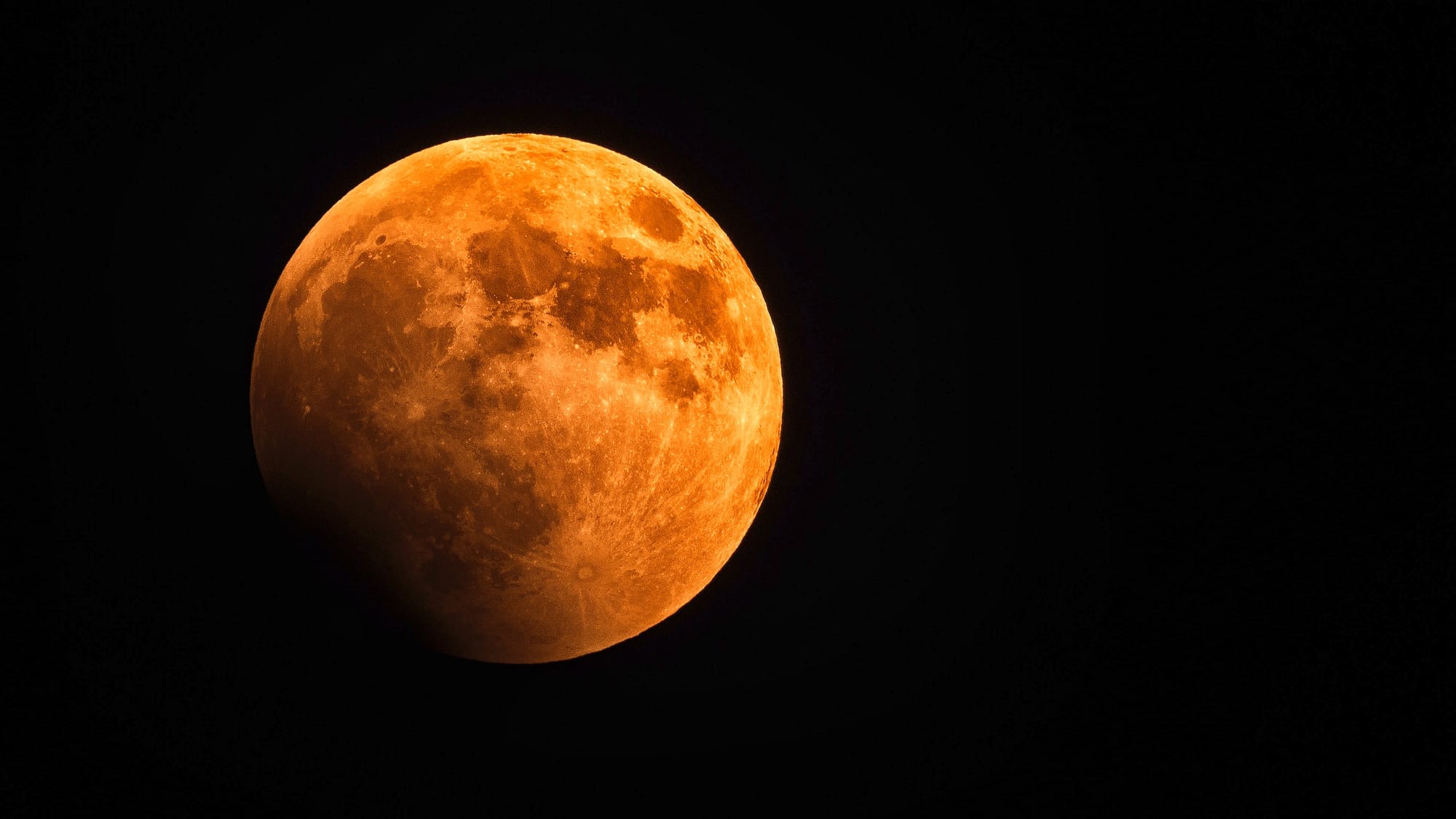
The "Mirror, Mirror on the Wall" Telescope: Secondary Mirror
The secondary mirror in a telescope is like the Robin to your Batman – it may not get all the glory, but it's essential. It helps to redirect light to the eyepiece, providing you with a clear and bright view of celestial objects. It's an unsung hero that plays a crucial role in your stargazing experience.
The "Eyes on the Prize" Telescope: Supplied Eyepieces
The eyepieces that come with your telescope are like the lenses for your cosmic camera. They determine how much magnification you get and how wide your field of view is. Having two eyepieces gives you the flexibility to switch between different magnifications, allowing you to zoom in on specific celestial objects or take in a wider view of the night sky.
The "Starry-Eyed Surprise" Telescope: Celestron Starsense Explorer LT
The Celestron Starsense Explorer LT is like the cool kid on the block. It's a beginner-friendly telescope that uses your smartphone to help you find and observe celestial objects. It's perfect for those who want a little technological assistance without feeling like they're cheating at astronomy.
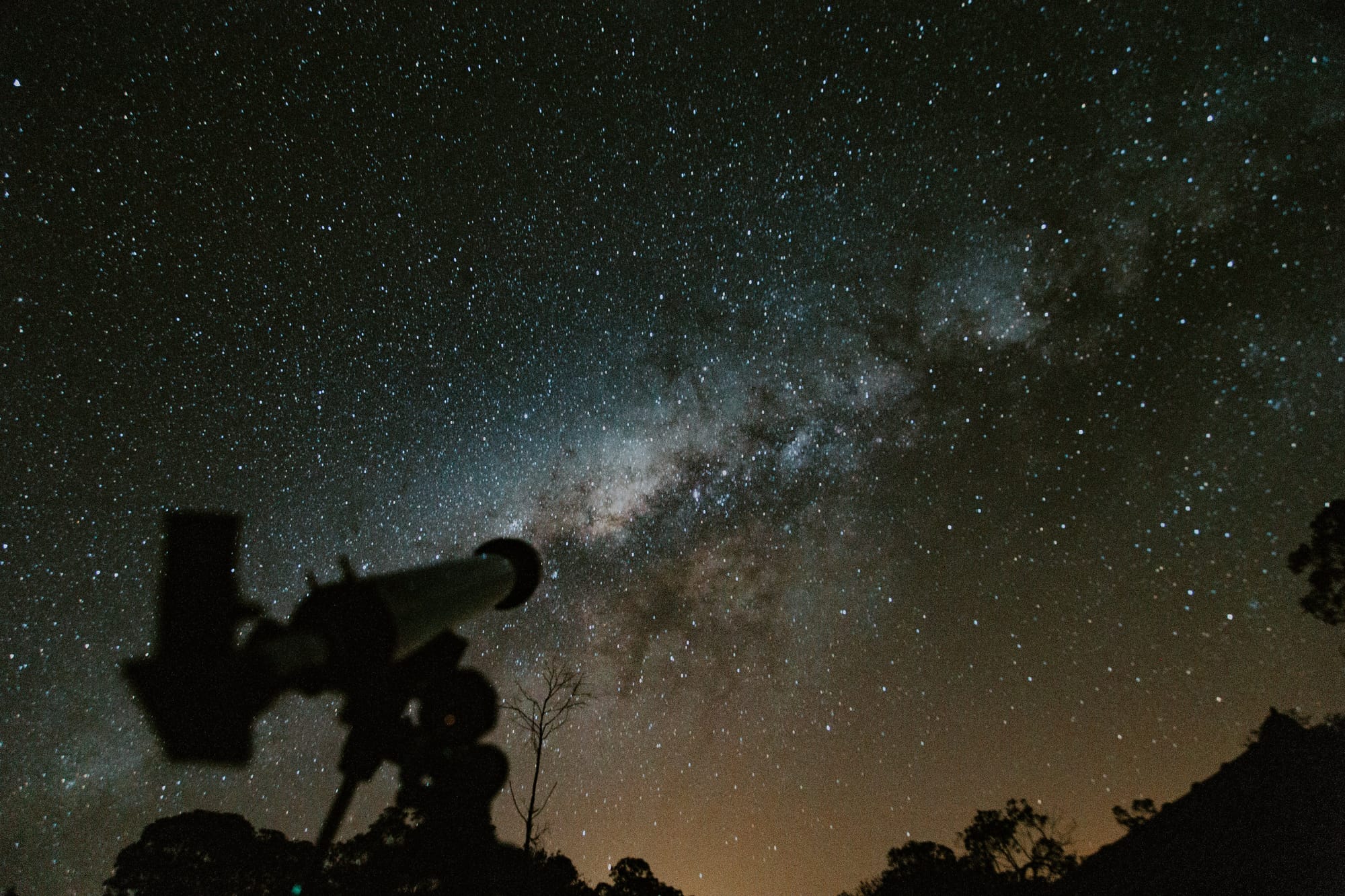
The "Once in a Blue Moon" Telescope: Rare Celestial Events
For those rare celestial events like eclipses or comet sightings, having the right telescope can make all the difference. Telescopes with a wide field of view and good light-gathering capabilities are ideal for these occasions. They allow you to capture the moment and experience the wonder of the universe in all its fleeting glory.
The "Out of This World" Telescope: Best Telescopes for Beginners
The best telescopes for beginners are the ones that strike a balance between simplicity and functionality. They're easy to set up and use, but they also offer enough features to keep you engaged as you learn more about astronomy. They're like the training wheels for your journey into the cosmos – supportive but not restrictive.
The "Sky's the Limit" Telescope: Expanding Your Horizons
As you become more experienced in stargazing, you may want to expand your horizons with a more advanced telescope. Telescopes with larger apertures, computerized mounts, and additional accessories can take your hobby to new heights. They're like the upgrade from a bicycle to a motorcycle – faster, more powerful, and a whole lot more fun.
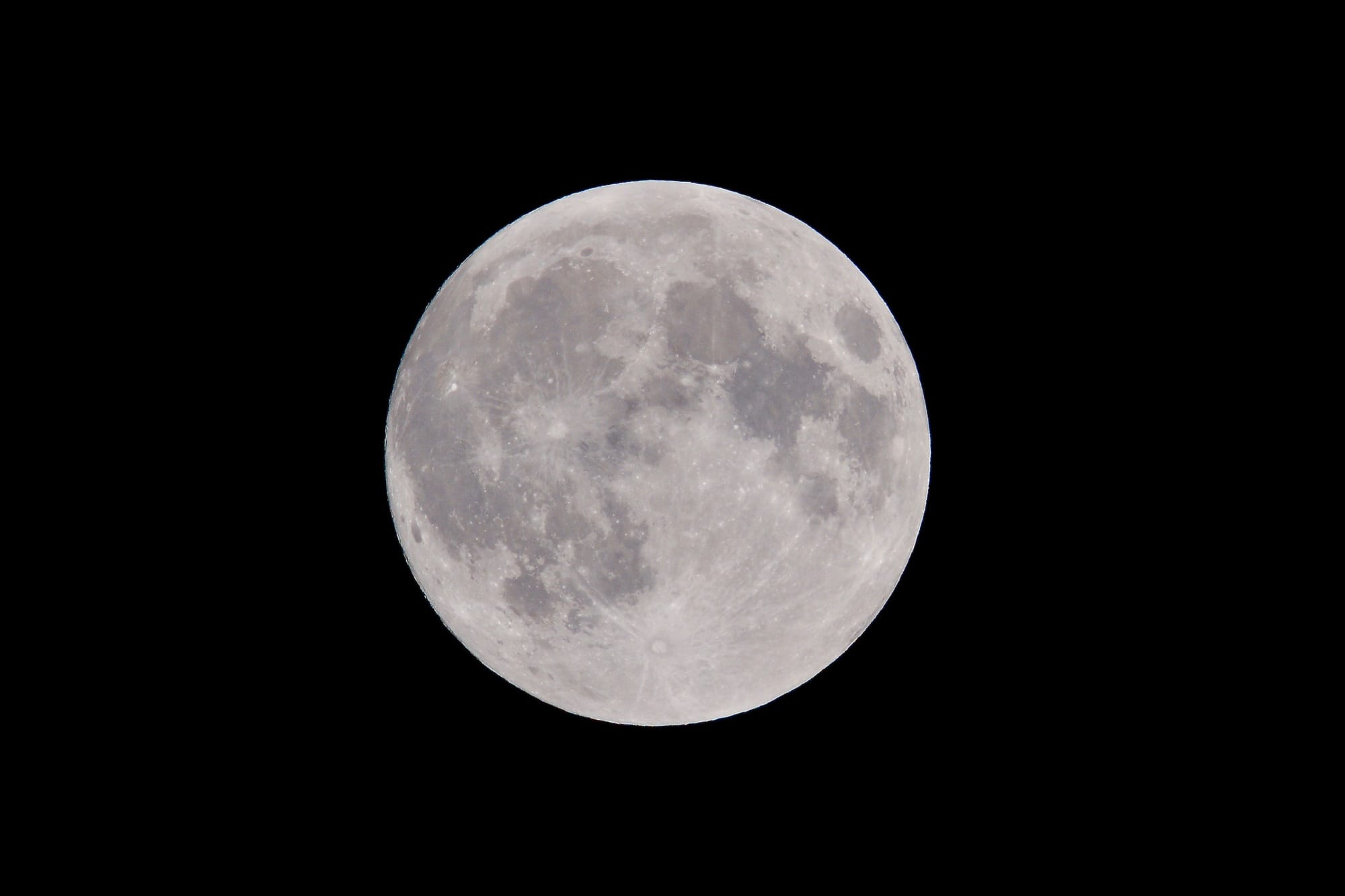
The "Twinkle, Twinkle, Big Star" Telescope: Observing Bright Celestial Objects
Observing bright celestial objects like planets and the moon can be a breathtaking experience. Telescopes with high-quality optics and a sturdy mount are ideal for this type of observation. They provide stable and clear views, allowing you to see the craters on the moon or the rings of Saturn in stunning detail.
The "Cosmic Connection" Telescope: Feeling Part of the Universe
There's something magical about looking through a telescope and feeling connected to the vastness of the universe. Whether you're observing a distant galaxy or a nearby planet, the right telescope can make you feel like you're a part of something much bigger than yourself. It's a humbling and awe-inspiring experience that's hard to beat.
The "Light at the End of the Telescope" Telescope: Focal Ratio
The focal ratio of a telescope is like the seasoning in a recipe – it can make a big difference in the final result. A telescope with a good focal ratio will provide bright and sharp images, making it easier to observe faint objects in the night sky. It's an important factor to consider when choosing your first telescope.

The "Celestial Dance" Telescope: Tracking Moving Objects
Tracking moving objects like satellites or the International Space Station can be a fun challenge. Telescopes with a motorized mount and tracking capabilities make it easier to follow these objects as they move across the sky. It's like playing a video game where the goal is to keep the spaceship in your sights.
The "Galactic Gateway" Telescope: Exploring Distant Galaxies
Exploring distant galaxies is like peeking into the unknown. Telescopes with a large aperture and high-quality optics are ideal for this type of exploration. They allow you to see beyond our own galaxy and discover the wonders that lie in the depths of space. It's an adventure that's both thrilling and humbling.
The "Celestial Snapshot" Telescope: Capturing Images
For those who want to capture images of their celestial observations, a telescope with astrophotography capabilities is a must. These telescopes are designed to work with cameras, allowing you to take stunning photos of the night sky. It's like having your own cosmic photo booth, ready to capture the memories of your stargazing adventures.
The "Nocturnal Navigator" Telescope: Navigating the Night Sky
Navigating the night sky can be daunting for beginners, but the right telescope can make it easier. Telescopes with user-friendly features like a red dot finder or a built-in star diagonal help you find your way among the stars. They're like the compass and map for your nocturnal journey, guiding you to the wonders of the universe.
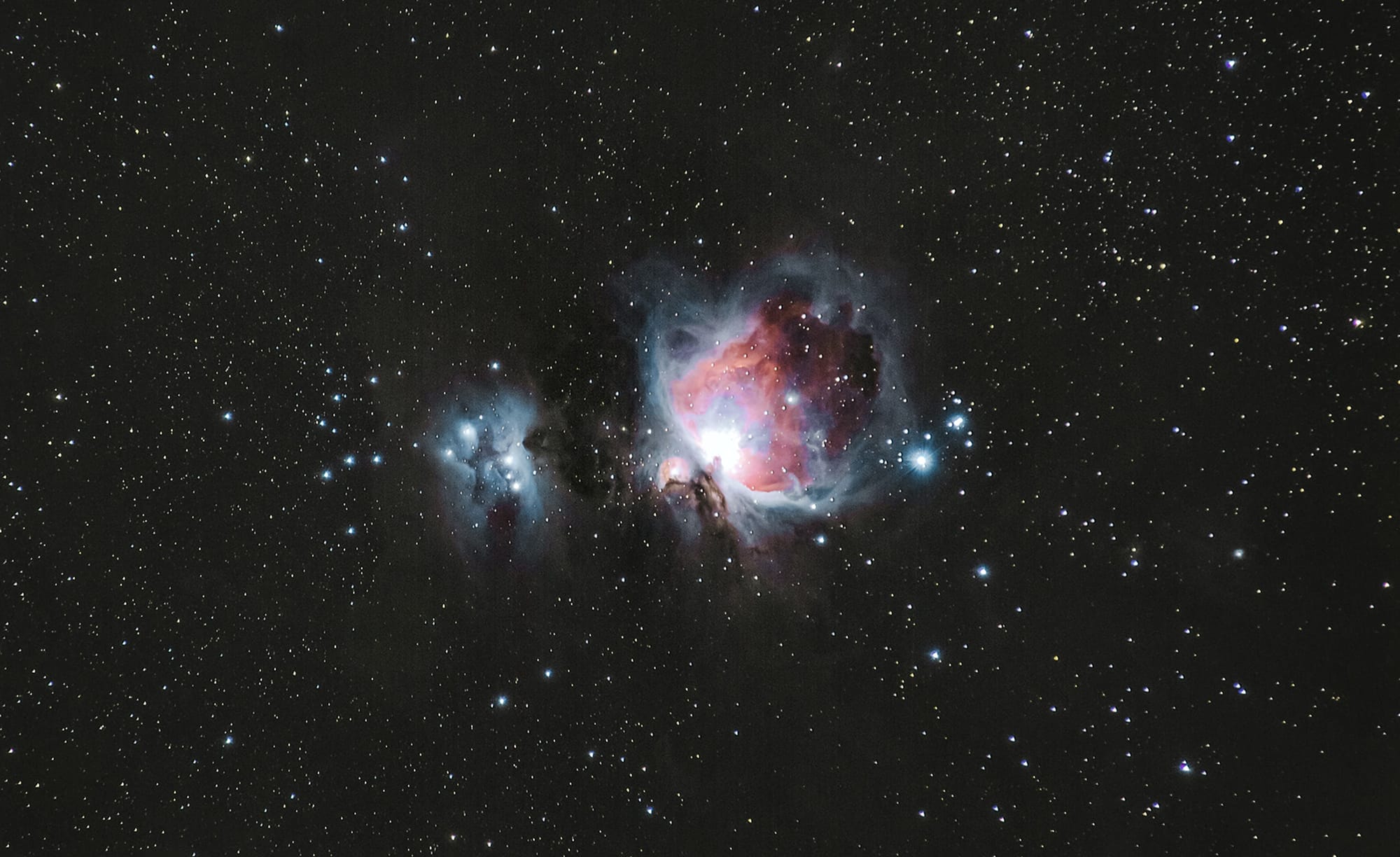
The "Cosmic Clarity" Telescope: Optical Quality
Optical quality is key when it comes to telescopes. You want clear and crisp views of celestial objects, not fuzzy blobs that leave you squinting. Telescopes with high-quality lenses and mirrors provide the best optical clarity, allowing you to see the night sky in all its glory.
The "Astronomical Ambitions" Telescope: Setting Goals
As you delve into the world of astronomy, setting goals can help you stay motivated and focused. Whether you want to observe all the planets in the solar system or spot a specific deep sky object, having a telescope that meets your needs is essential. It's like having a personal trainer for your astronomical ambitions, pushing you to reach for the stars.
The "Cosmic Classroom" Telescope: Learning About Astronomy
Learning about astronomy is a lifelong journey, and a good beginner telescope can be your guide. Telescopes that come with educational materials or access to astronomy clubs can enhance your learning experience. They're like the textbooks and study groups for your cosmic classroom, helping you understand the universe one star at a time.
The "Stellar Spectacle" Telescope: Enjoying the Show
At the end of the day, stargazing is about enjoying the show that the universe puts on every night. The best telescope for you is the one that allows you to sit back, relax, and marvel at the celestial spectacle. It's the ultimate entertainment system, with an ever-changing lineup of stars, planets, and galaxies to keep you captivated.
The "Universal Language" Telescope: Sharing the Experience
Astronomy is a universal language that can be shared with friends and family. A beginner telescope that's easy to use and transport makes it possible to share the stargazing experience with others. It's like inviting people to join you on a cosmic road trip, exploring the universe together.

The "Night Owl" Telescope: Observing at All Hours
For the night owls who come alive when the sun goes down, a telescope that's quick to set up and easy to use is ideal. It allows you to make the most of those late-night hours, observing celestial objects while the rest of the world sleeps. It's the perfect companion for your nocturnal adventures.
The "Celestial Symphony" Telescope: The Sounds of the Universe
While telescopes can't literally let you hear the sounds of the universe, they can give you a visual symphony of stars and galaxies. Observing the night sky is like listening to a celestial symphony, with each celestial object playing its part in the cosmic orchestra. It's a sensory experience that's both visual and emotional.
5 of the Best Beginner Telescopes Available on Amazon
We hope you find your next awesome thing from the list below! Each product was independently selected by our editors. Some may have been sent as samples for us to fiddle with, but all opinions in this article are our own. Oh, and FYI — AnnesAnalytics may collect a share of sales or other compensation from the links on this page if you decide to buy something (that's how we stay in business). Reviews have been edited for length and clarity. Enjoy finding your next awesome thing.
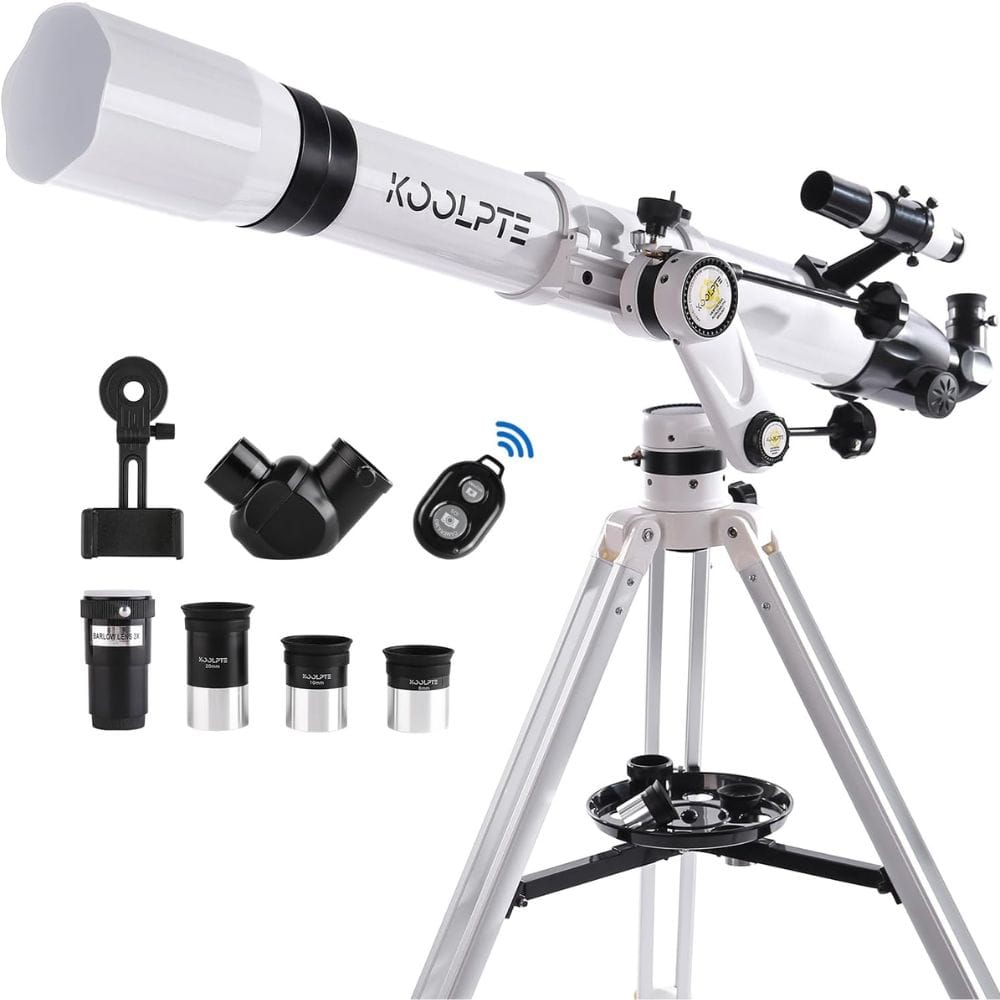
KOOLPTE Telescope 90mm Aperture
Precision Adjustment, Magnification 45-450x, Wireless Remote, Phone Adapter - Ideal for Astronomy Enthusiasts and Beginners
Discover the wonders of the cosmos with our advanced telescope, boasting a 90mm aperture and 900mm focal length. This refracting telescope is engineered to deliver powerful optical performance, enabling you to effortlessly gaze at deep space objects with unparalleled clarity. Whether you're a seasoned astronomer or a curious beginner, this telescope is your gateway to the stars.
Experience the pinnacle of stability with the Vertisteel Altazimuth Mount. Crafted from premium materials, this mount is not only sturdy and durable but also features a cutting-edge Free-Stop non-polar shaft. The innovative Follow-up and stop design ensures that the telescope glides smoothly across the celestial sphere, offering high precision tracking and maintaining accurate positioning for an uninterrupted stargazing adventure.
Elevate your astronomical observations with this exceptional telescope, designed for both durability and precision. Explore the universe with confidence and clarity like never before.
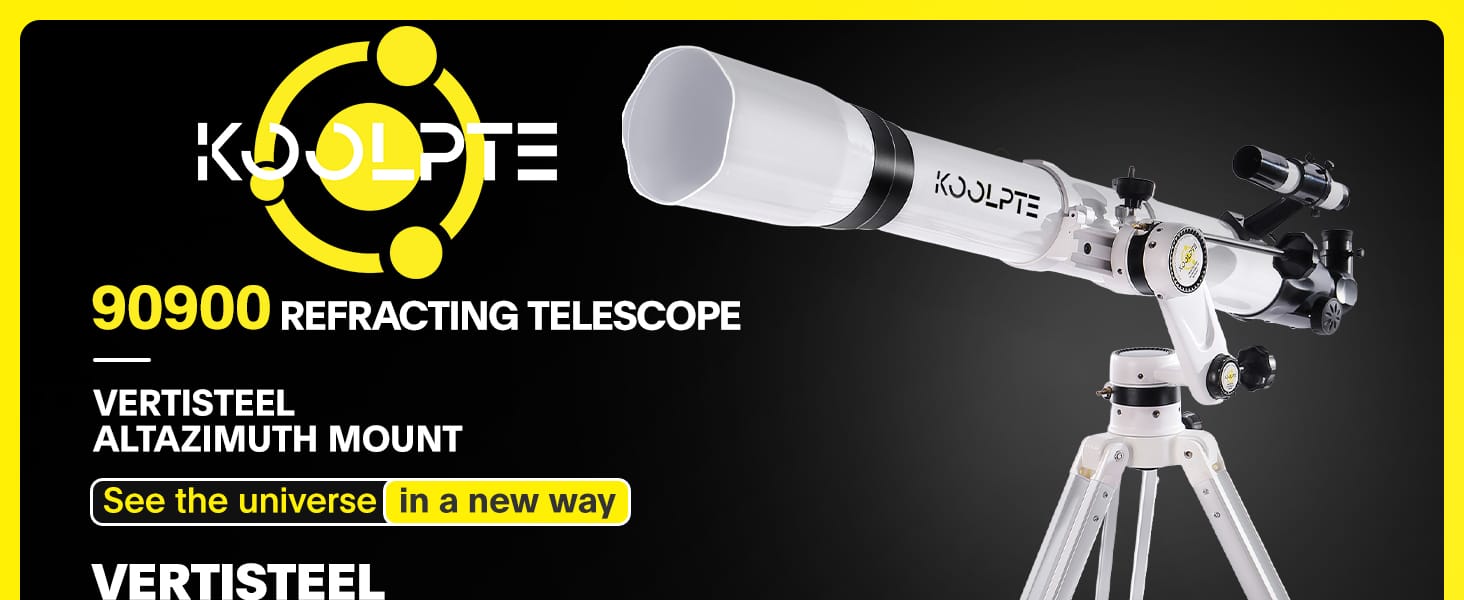
Encouraging Review
"Bought as a Christmas gift for my husband. He was psyched. It was easy to setup and has a lot of really great features. He especially likes the ability to view from his phone so he can get it setup just the way he wants without having to look through the view finder. It seems to be built well and does what we would need it to. It was a great value and we’ve already been enjoying it!" Amazon Review by K J
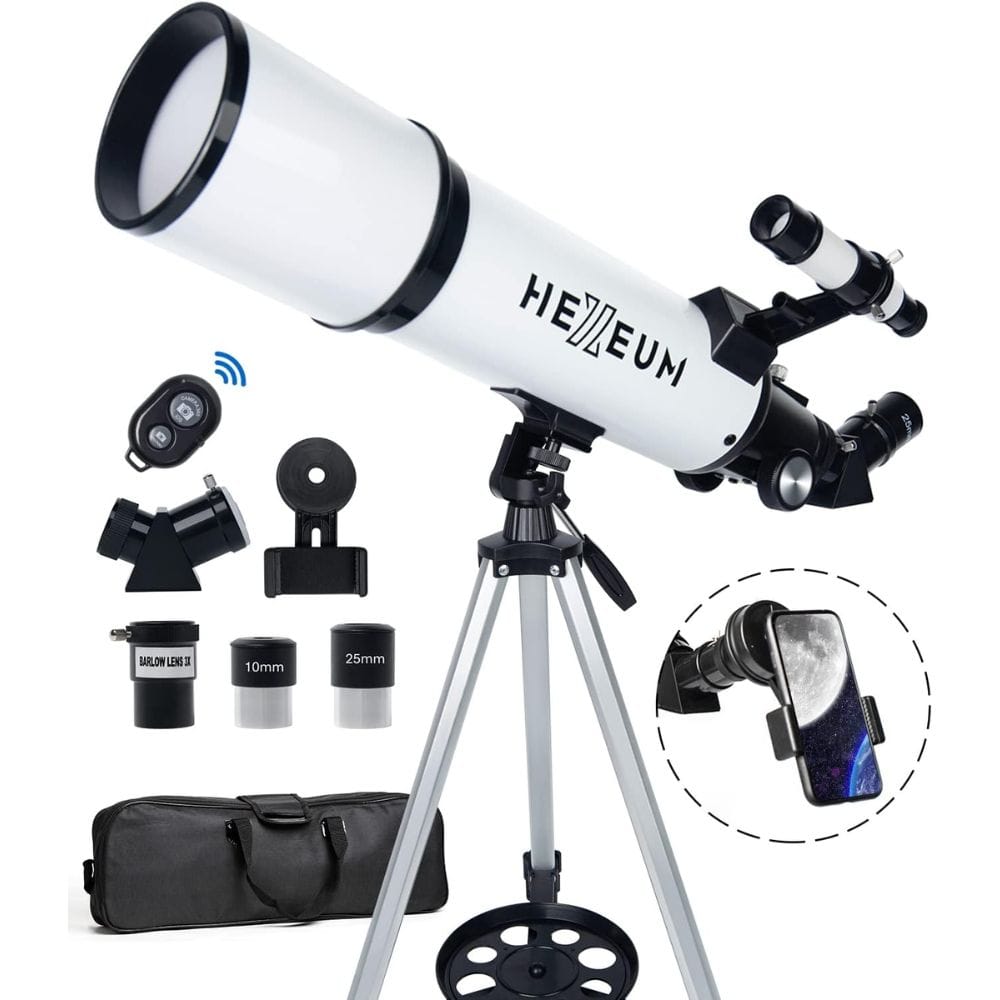
HEXEUM Telescope 80mm Aperture 600mm
Astronomical Portable Refracting, Fully Multi-coated High Transmission Coatings AZ Mount with Tripod Phone Adapter, Wireless Control, Carrying Bag
Our telescope boasts a 600mm (f/6.7) focal length and an impressive 80mm aperture, designed to bring the heavens closer to you. The large aperture ensures that you can capture brighter and more detailed images of celestial bodies. Coupled with multi-coated, high-transmission optical lenses, this telescope delivers exceptional image brightness and clarity, making every stargazing session unforgettable.
Whether you're a budding astronomer or an experienced stargazer, our telescope is equipped with two high-quality eyepieces (25mm and 10mm) that provide 24X and 60X magnification respectively. The addition of a 3x Barlow lens triples the magnifying power of each eyepiece, allowing you to magnify the moon up to 72X or 180X. This feature ensures that you can explore the lunar surface in exquisite detail.
Locating celestial objects is a breeze with our 5x24 finder scope. This handy tool simplifies the process of navigating the night sky, ensuring that you can easily find and focus on your astronomical targets.
Embark on a celestial adventure with our top-notch telescope, designed for both kids and adults. Experience the wonders of the universe like never before. Explore the moon, planets, and stars with clarity and precision. Don't miss out on the opportunity to transform your night sky observations into a truly stellar experience.
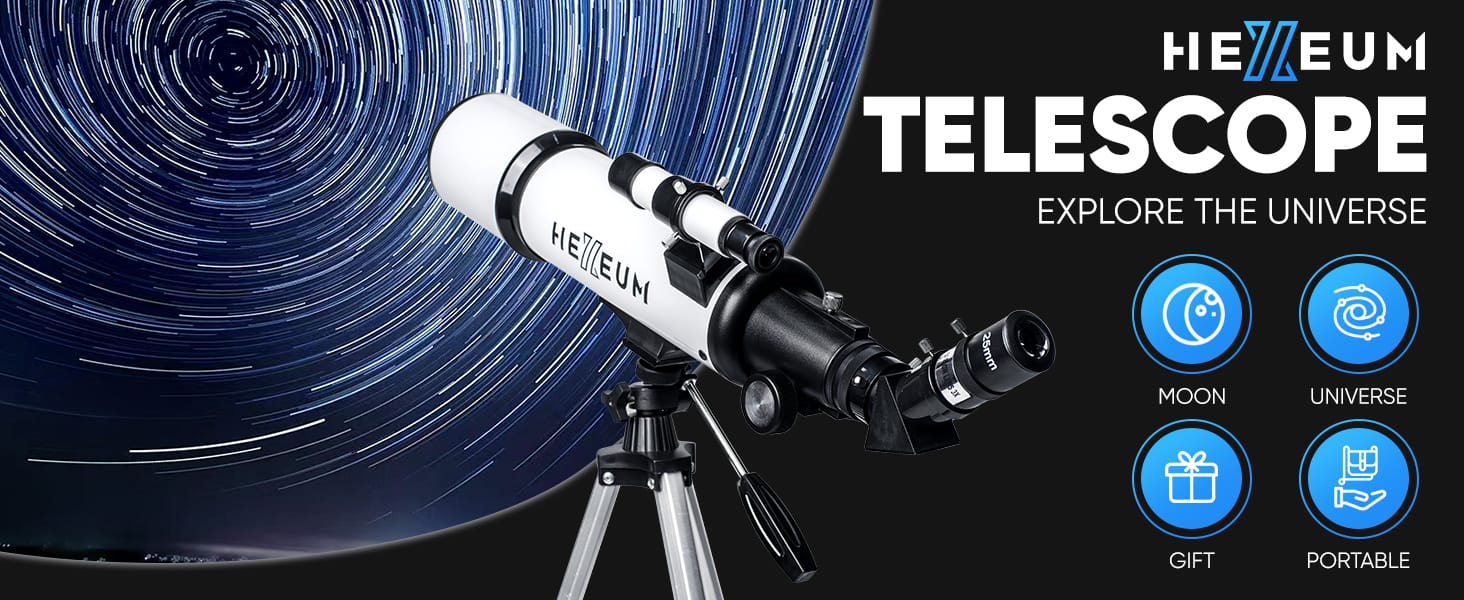
Encouraging Review
"This telescope was so easy to set up, light weight and dependable. You can see the moon clearly and comes with multiple eye pieces with different magnifications, and it even allows you to use your phone to take a picture of what you’re seeing. Best Christmas present thus far." Amazon Review by Cintya Javiar
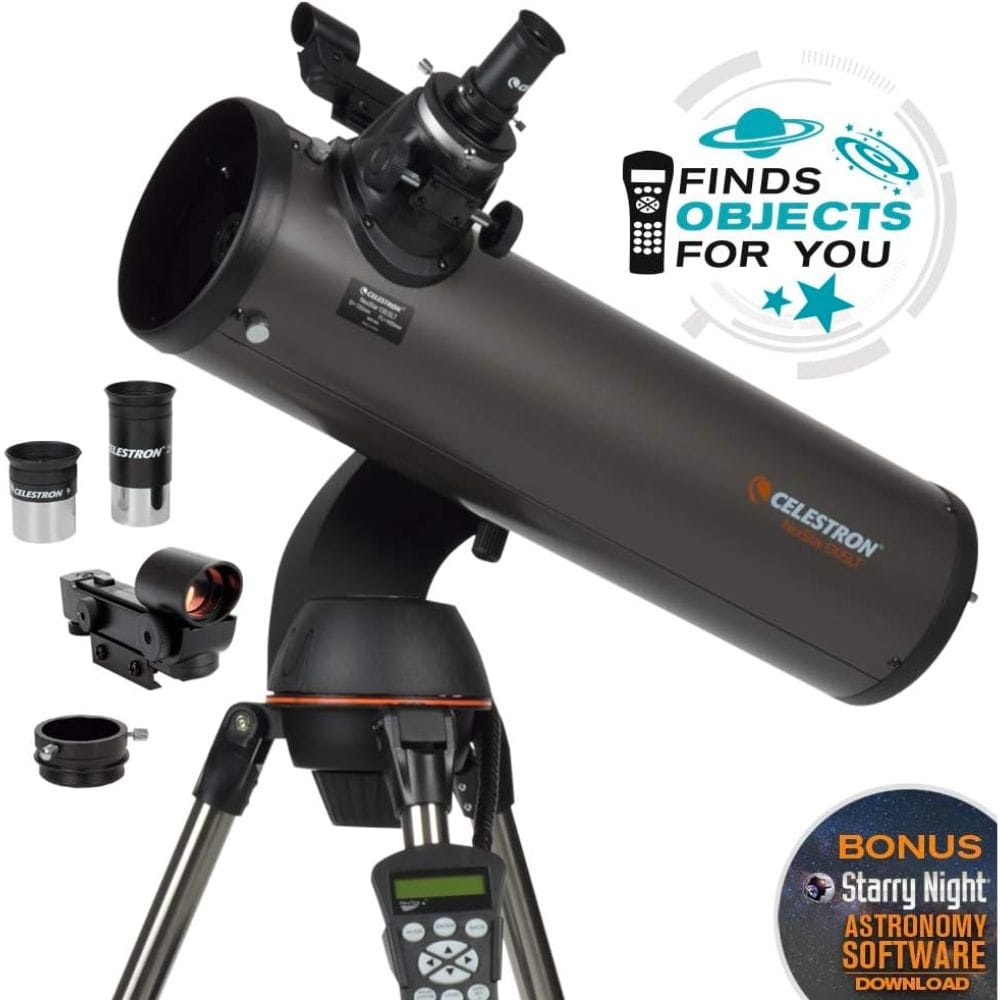
Roll over image to zoom inCelestron - NexStar 130SLT Computerized Telescope
Compact and Portable - Newtonian Reflector Optical Design - SkyAlign Technology - Computerized Hand Control - 130mm Aperture
Discover the universe with our lightweight and portable telescope, perfect for both adults and children. Whether you're planning a family camping adventure or a serene trip to a dark sky park, this telescope is your ideal companion. Its compact design ensures effortless transportation and quick assembly, so you can start stargazing in no time.
Advanced Technology for Enhanced Stargazing
- Flash Upgradeable Hand Control Software: Stay up-to-date with the latest features and enhancements with the ability to download product updates directly from the Internet.
- Motor Control Units: Experience smooth and precise tracking with advanced motor controls that keep your celestial viewing experience seamless.
Effortless Alignment with SkyAlign
- SkyAlign Technology: Simplify your stargazing setup with our innovative SkyAlign system. Align your telescope on any three bright celestial objects for a quick and easy alignment process. This intuitive method is perfect for beginners and seasoned astronomers alike, ensuring you spend less time setting up and more time enjoying the cosmos.
Optimize your stargazing experience with this versatile telescope, designed to bring the wonders of the night sky closer to you. Whether you're a budding astronomer or a seasoned sky watcher, our telescope offers the perfect balance of portability, ease of use, and advanced features.
Encouraging Review
"At the end of the day, I have to say that for the money, this scope does everything it is intended to do. Have some realistic expectations going in. You are not going to get Hubble Space Telescope views out of this scope! But you will get a lot of enjoyment out of it if you take the time to set it up and align it properly. I did get a good view of a deep space galaxy, which as many have stated, was simply a distant smudge of stars. However, it was clearly visible amongst the background of distinct stars." Amazon Review by Bryan
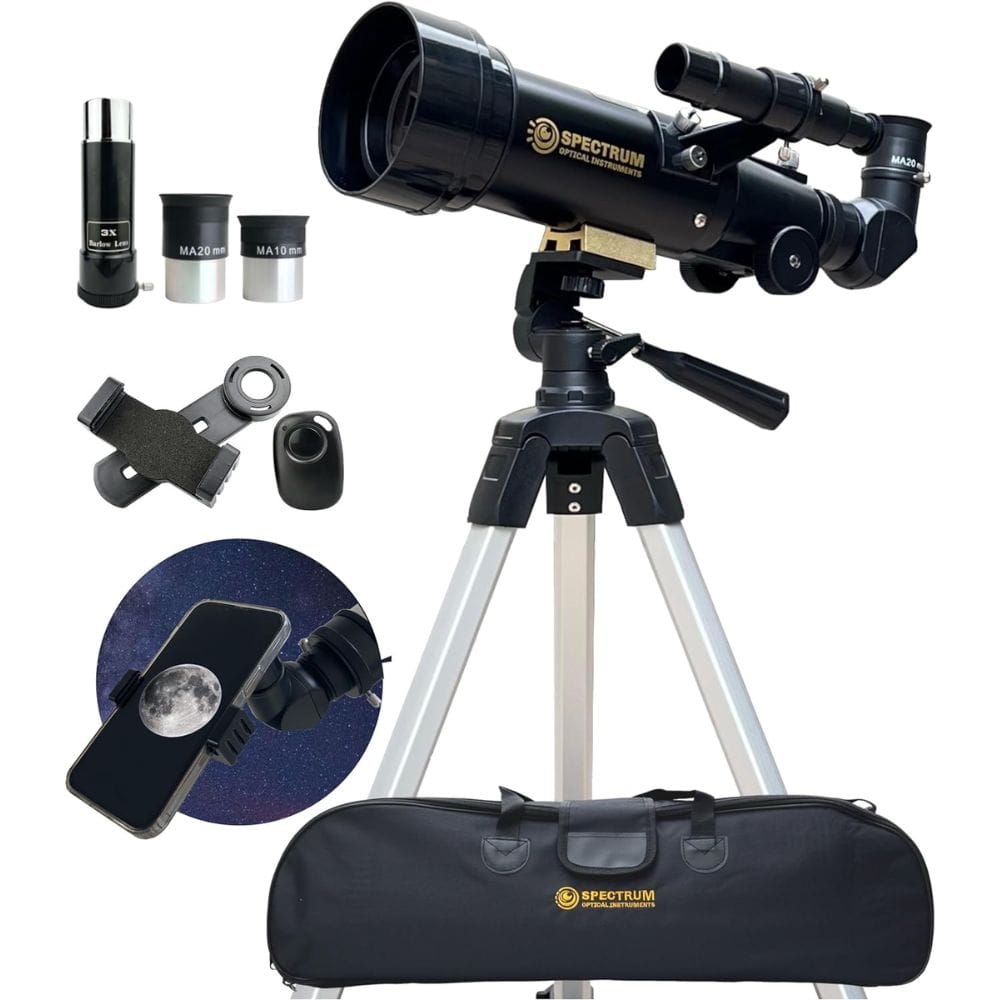
Spectrum Premium Refractor Telescope for Astronomical Exploration with Carry Bag
Telescope for Kids and Adults
Discover the Universe with Clarity: Our beginner telescope is the perfect gateway to the stars for kids aged 8-12 and astronomy beginners. Featuring a high-quality refractor design, this telescope boasts fully multi-coated optical lenses, ensuring maximum light transmission for a crystal-clear view of the night sky. With a generous 70mm aperture and a 400mm focal length, it's well-suited for a broad spectrum of celestial observations.
Smartphone Compatibility for Enhanced Viewing: Elevate your stargazing experience by connecting this telescope to your smartphone. It transforms into a smart telescope, allowing you to capture and share your astronomical discoveries with ease. This feature also makes it an excellent choice for those seeking a professional-grade telescope to observe planets in stunning detail.
Portable Design for On-the-Go Astronomy: Whether you're a young space enthusiast or an adult with a passion for the cosmos, our telescope is designed for convenience. It's the ideal portable telescope for children as young as 5 years old and serves as an excellent astronomy gift for ages 8-13. All necessary accessories, including a stable, adjustable aluminum tripod, fit neatly into a handy carrying bag, making it the perfect travel telescope for your next adventure.
Sturdy and Reliable for Serious Observers: Stability is key when it comes to astronomy. That's why our professional telescope comes with a robust aluminum tripod, ensuring steady and reliable observations. Whether you're scanning the horizon or zooming in on distant galaxies, our telescope offers the stability you need for a rewarding stargazing session.
Embark on a celestial journey with our versatile and user-friendly telescope – your window to the wonders of the universe.

Encouraging Review
"When there is a clear night without clouds the telescope works great. I haven't used a telescope since I was a kid, so in many ways I am a beginner. But this scope works well for beginners." Amazon Review by Kirk Spencer
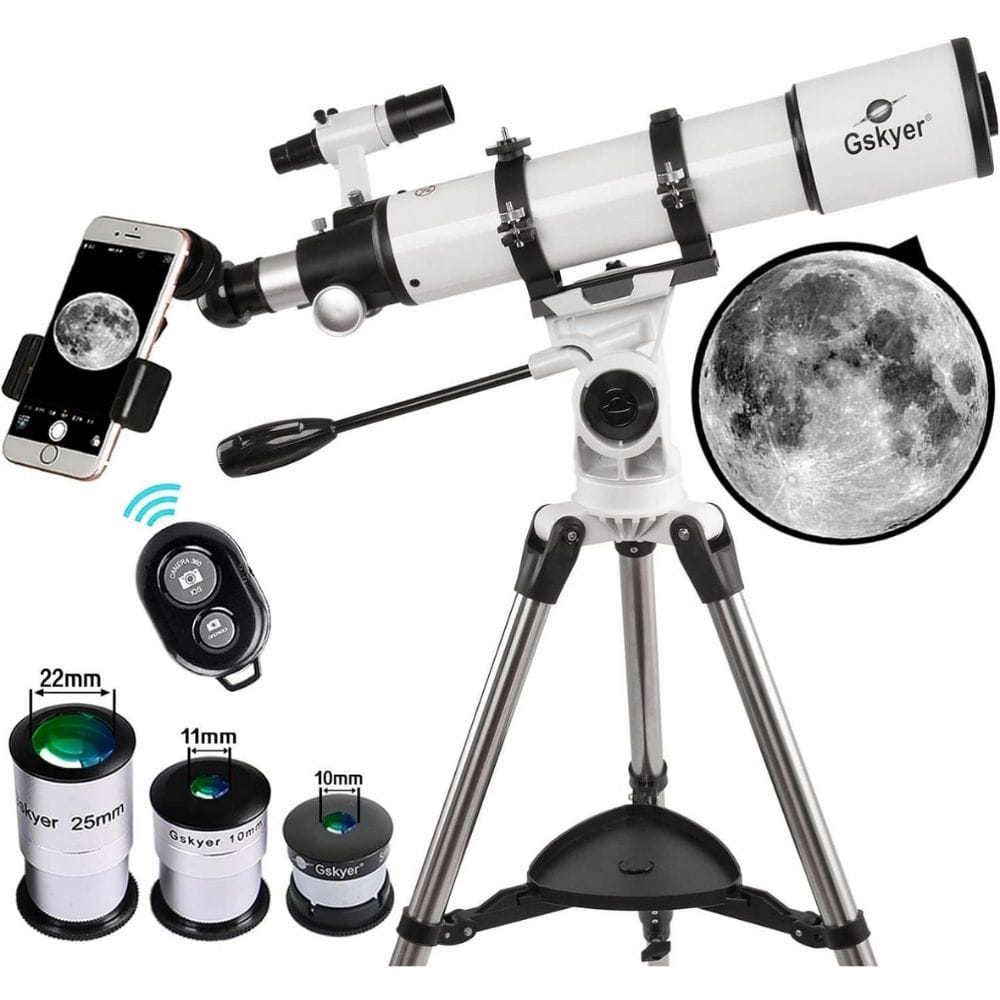
Gskyer Telescope 600x90mm AZ Astronomical Refractor Telescope
For Kids and Adults
Experience the universe like never before with our Advanced Astronomical Telescope, featuring a substantial 600mm (f/6.7) focal length and a generous 90mm aperture. The fully coated optics glass lens boasts high transmission coatings, ensuring that you witness breathtaking celestial images while safeguarding your vision.
Our telescope comes equipped with a set of three interchangeable eyepieces, offering magnifications of 24X, 60X, and 120X, to suit your stargazing needs. Additionally, the inclusion of a 3x Barlow lens amplifies the power of each eyepiece by threefold, providing you with unparalleled clarity and zoom for an immersive astronomical experience.
Elevate your star-gazing adventures with our telescope's exceptional features, designed for both amateur astronomers and seasoned sky-watchers alike.

Encouraging Review
"In summary, if you are looking for a compact, easy to carry, easy to use scope that can serve as a spotting scope during the day and an astronomical scope at night, the Gskyer 80 mm refractor should serve you well. And since it uses the standard 1.25” eyepiece and diagonal size it will let you add eyepieces, filters, diagonals and other accessories in the future. You can also take photos or videos through the eyepiece. You can hold the phone up to the eyepiece but there are attachments made for “digiscoping” with 1.25” eyepieces that make this a lot easier. Or add an eyepiece webcam to project the image on a screen or enter into the world of planetary imaging." Amazon Review by A. Anderson
Summary
Don't let complexity dim your stargazing dreams. With our Ultimate Guide to the Best Telescope Kits for Beginners, you'll be ready to explore the stars with ease and a touch of humor. Start your adventure today and unlock the mysteries of the universe one constellation at a time.
FAQs on the Best Telescopes for Beginners
Q: How much is a decent beginner telescope? A: For those just starting in astronomy and astrophotography, a price range of $300 to $1,000 is standard. The first choice is whether to buy a manual telescope or a computerized unit that can help you locate and track objects.
Q: How big of a telescope do I need to see the flag on the Moon? A: No telescope on Earth (or in Earth orbit) is even remotely powerful enough to see the US flag on the Moon, not in the year 2017 and probably not even in the year 2117. That's because it would require a telescope with a size of about 100 kilometers to see the flags from Earth.
Q: Can you see planets with a beginner telescope? A: With just a small or medium-sized telescope, skygazers can easily observe planets. You'll be surprised how much of our solar system you can see! And you don't need a dark sky to view all of our solar system's planets; even under city lights, Venus, Mars, Jupiter and Saturn can be easy to see with a telescope.
Q: Is it worth buying a cheap telescope? A: While it might be tempting to go for a cheaper telescope, it's essential to balance cost with performance and usability. Here are some points to consider: Quality of Optics:Cheaper telescopes often come with lower-quality optics, which can result in poor image quality and frustration for beginners.
Q: What can you see with a 1000 dollar telescope? A: A telescope worth $1,000 can offer a range of features such as a larger aperture for better light-gathering ability, higher magnification, and better quality optics. With such a telescope, you can observe the moon in great detail, see the rings of Saturn, the moons of Jupiter, and various star clusters and nebulae.
Q: Can you see planets with a cheap telescope? A: With just a small or medium-sized telescope, skygazers can easily observe planets. You'll be surprised how much of our solar system you can see! And you don't need a dark sky to view all of our solar system's planets; even under city lights, Venus, Mars, Jupiter and Saturn can be easy to see with a telescope.
Q: What is important when buying a telescope? A: The most important aspect of any telescope is its aperture, the diameter of its main optical component, which can be either a lens or a mirror. A scope's aperture determines both its light-gathering ability (how bright the image appears) and its resolving power (how sharp the image appears).
Q: Which is better a reflector or refractor telescope? A: In summary: Refractors generally have the edge over reflectors for a quality image, both from the standpoint of lens/mirror quality and precision optical mountings, and lack of central obscurations.
Q: What is the hardest planet to see with a telescope? A: Out of the five planets known since ancient times as the 'wandering stars', Mercury is the one least explored. Unlike Venus, Mars, Jupiter and Saturn, Mercury is notoriously difficult to observe from Earth. Being the innermost planet of the Solar System, it always appears too close to the Sun.
Q: Do telescopes hold their value? A: Your choice depends on what you can sacrifice for that hobby. I should also say that to a certain degree, A telescope stores some value and 70 percent is not very bad if you enjoyed it thoroughly over a reasonable length of time. Even then, the amount you pay for a new telescope is not necessarily the value.Jan 12, 2020

